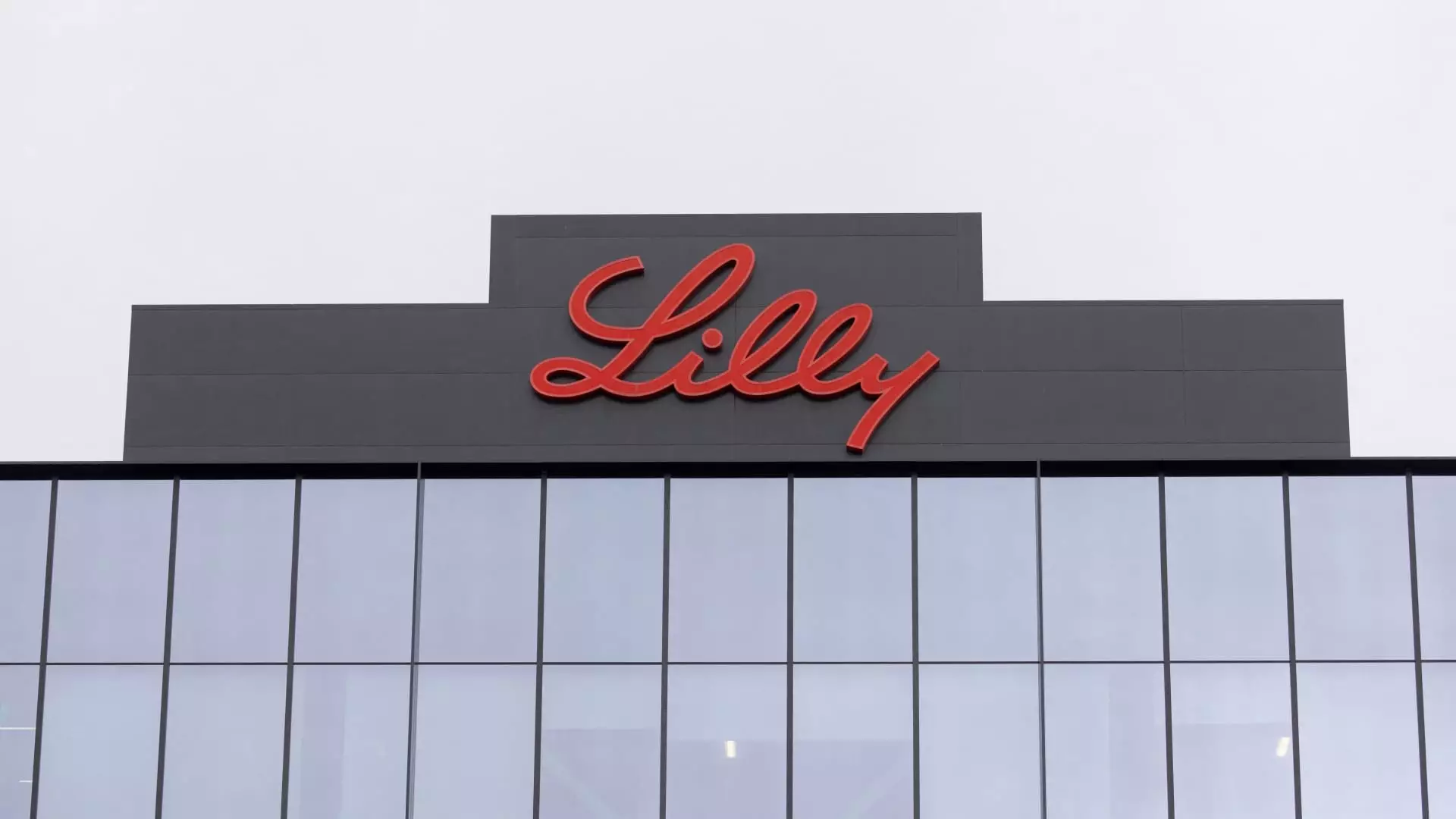In an unexpected twist, shares of various pharmaceutical companies witnessed a rebound following President Donald Trump’s announcement to temporarily lower tariffs on imports from numerous countries. This decision, while seemingly relieving immediate financial pressure, brings with it a more complex web of consequences that merits discussion. According to Trump, the tariffs will be reduced to 10% for a period of 90 days; however, the immediate escalation of tariffs on China to a staggering 125% has raised eyebrows across the industry.
Trump’s presidency has often been marked by erratic economic policies that can swing wildly based on market perceptions and political pressures. The recent announcement is no exception. While it offers a short-term lifeline for companies like Eli Lilly and Pfizer—whose stocks took a hit earlier—there’s a catch: the pharmaceutical-specific tariffs remain on the table. This setup creates a contradiction where, although some companies find temporary solace, many still face an uncertain reality concerning their international supply chains.
The Pitfalls of Tariffs
The idea that tariffs can serve as a catalyst for reshoring pharmaceutical manufacturing is simplistic at best. It overlooks the staggering reality that the industry’s production processes have become intricately globalized. Tariffs might sound appealing in theory, but they can disrupt well-oiled supply chains that have taken years to establish. BMO Capital Markets analyst Evan Seigerman aptly noted, “Global supply chains are complex, with Pharma among the most—it’s not as simple as moving where someone screws in little screws to make an iPhone.” This statement illustrates a critical flaw in Trump’s rhetoric, as it simplifies an intricate economic issue.
Restructuring such a complex network of operations won’t just happen overnight; it requires significant investment and time. Companies like Johnson & Johnson may opt to adopt a wait-and-see approach before making permanent decisions on manufacturing locations, which could tie their hands and leave U.S. patients vulnerable.
The Hidden Costs for Patients
The conversation surrounding tariffs frequently neglects a crucial player in the equation: the patients who rely on effective pharmaceuticals. House Democrats have raised concerns that the escalating trade war could trigger dire repercussions for U.S. patients, including disruption of crucial medical supplies. The alarming prospect of rationing treatments due to disruptions carries moral weight that must not be ignored.
One can’t help but question the rationale behind imposing tariffs that could inadvertently raise drug prices and delay deliverability, adversely affecting thousands in need of timely care. Eli Lilly CEO Dave Ricks succinctly summarized the impact of tariffs when he stated, “Typically, that will be in reduction of staff or research and development, and I predict R&D will come first. That’s a disappointing outcome.” This candid acknowledgment reveals the broader implications of such economic policies—not merely boardroom profits but our lives hanging in the balance.
The Strain on Innovation
Another vital aspect that warrants scrutiny is the potential impact on research and development. The very foundation of the pharmaceutical industry rests on innovation—discovering groundbreaking treatments that save lives. Yet, tariffs serve as a burden that diverts precious resources away from R&D initiatives. Companies in the pharmaceutical sector are cognizant of the delicate balance they must strike between profitability and innovation; when a significant portion of their budget is siphoned off to cover tariff costs, the stakes for future discoveries are alarmingly high.
With both Eli Lilly and J&J pledging billions in new investments aimed at enhancing domestic production, the looming question remains: can they sufficiently mitigate the adverse effects of tariffs while maintaining their commitment to innovation? As many would argue, keeping the wheels of ingenuity turning is paramount, and short-term tariff strategies could jeopardize this mission.
The Broader Economic Impact
Many economic analysts are rightly cautious about the long-term implications of these tariffs, not just for pharmaceutical giants but for the greater economy as well. With U.S. imports of pharmaceuticals soaring to nearly $213 billion in 2024, any disruption in this essential sector can reverberate across various industries. The current administration appears to be galvanizing a “Nationalist” approach to economics, thinking it might spur job growth within the U.S. However, the realities of the global economy challenge this notion sharply.
As pharmaceutical companies wrestle with the fallout of these policies, the ramifications could extend beyond the industry itself, impacting jobs broadly across healthcare and technology sectors. The decision to rely on tariffs as a tool for economic strategy runs the risk of saying ‘no’ to more viable options for growth that could strengthen U.S. global competitiveness.
Ultimately, while the pause on tariffs might momentarily soothe nerves in the stock market, the long-term vision remains cloudy, filled with potential pitfalls that could hinder both patient care and pharmaceutical advancement. The complexity of manufacturing in an increasingly globalized economy serves as a poignant reminder that simplistic solutions seldom lead to sustainable outcomes.

